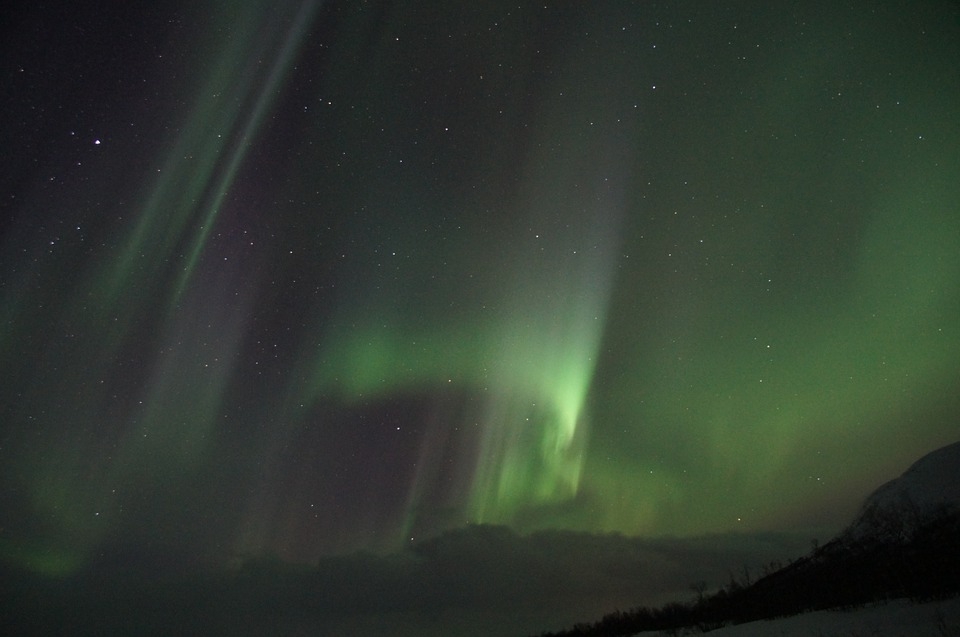Just like how the weather on Earth can be turbulent, the weather in the Solar System is also unpredictable. A recent report reveals that the planet is currently in the midst of a solar windstorm.
Express reports that Earth is in the midst of a solar windstorm at the moment, as the winds from the Sun have finally reached the planet. According to space weather forecasters, the solar particles traveled 150 million kilometers from the Sun to Earth, and the winds were hitting Earth at a speed of 1,120,000 kilometers per hour. The site Space Weather further described the current storm that the Earth is experiencing. “The stream’s velocity is moderately high, but it contains south-pointing magnetic fields that can open cracks in Earth’s magnetosphere. Arctic sky watchers should be on the lookout for auroras mixed with springtime twilight.”
Auroras are referring to the northern lights and southern lights, aurora borealis and aurora australis. These occur when the magnetosphere is hit with solar winds, deflecting the particles and producing the stunning blue and green lights seen in the Arctic regions.
But aside from auroras, other effects of a solar storm on Earth is the momentary malfunctioning of satellite technology, therefore disrupting GPS navigation, mobile phone reception, and satellite television. In very rare occurrences, solar storms can also affect the electricity, leading to overload in power lines and electrical transformers. A recent study also revealed that solar storms happen once every 25 years.
In other news, 2020 marks the 30th anniversary of the Hubble Space Telescope since its launch back in 1990. The telescope made history as it provided views of deep space and glimpses of the phenomena that occur in the universe. Developed in a joint partnership between NASA and the European Space Agency, it changed the game for many scientists looking to further explore space, and it has produced some of the most iconic images of the cosmos.
The agency recently shared a new photo of the Hubble’s most famous photo of the Eagle nebula’s Pillars of Creation, which was first seen in 1995. Another famous shot was of gas giant Jupiter and one of its moons, Io.



 Spacesuits need a major upgrade for the next phase of exploration
Spacesuits need a major upgrade for the next phase of exploration  Why now is the time to address humanity’s impact on the moon
Why now is the time to address humanity’s impact on the moon  If life exists on Jupiter’s moon Europa, scientists might soon be able to detect it
If life exists on Jupiter’s moon Europa, scientists might soon be able to detect it  How do airplanes fly? An aerospace engineer explains the physics of flight
How do airplanes fly? An aerospace engineer explains the physics of flight  The mystery of consciousness shows there may be a limit to what science alone can achieve
The mystery of consciousness shows there may be a limit to what science alone can achieve  Our survey of the sky is uncovering the secrets of how planets are born
Our survey of the sky is uncovering the secrets of how planets are born  Black hole, neutron star or something new? We discovered an object that defies explanation
Black hole, neutron star or something new? We discovered an object that defies explanation  Six space missions to look forward to in 2024
Six space missions to look forward to in 2024  Archeoastronomy uses the rare times and places of previous total solar eclipses to help us measure history
Archeoastronomy uses the rare times and places of previous total solar eclipses to help us measure history  Could a telescope ever see the beginning of time? An astronomer explains
Could a telescope ever see the beginning of time? An astronomer explains  Why is the universe ripping itself apart? A new study of exploding stars shows dark energy may be more complicated than we thought
Why is the universe ripping itself apart? A new study of exploding stars shows dark energy may be more complicated than we thought  Customizing mRNA is easy, and that's what makes it the next frontier for personalized medicine − a molecular biologist explains
Customizing mRNA is easy, and that's what makes it the next frontier for personalized medicine − a molecular biologist explains  Tatahouine: 'Star Wars meteorite' sheds light on the early Solar System
Tatahouine: 'Star Wars meteorite' sheds light on the early Solar System  Eggs from men, sperm from women: how stem cell science may change how we reproduce
Eggs from men, sperm from women: how stem cell science may change how we reproduce 






























